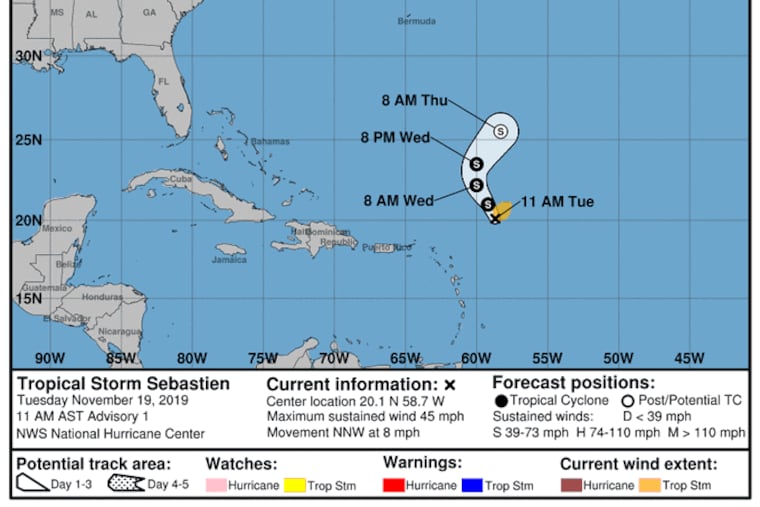Sebastien becomes 18th named storm of the Atlantic hurricane season, most in seven years
Not since 2012, the year of Sandy, have this many tropical storms formed in the Atlantic Basin.

With the Atlantic hurricane season approaching sunset, the National Hurricane Center has decreed that a storm swirling well northeast of the windward Caribbean islands has earned the name Sebastien.
And while its impacts might be confined to some marine species in the open Atlantic Ocean, it is of some significance because it marks the first time since 2012 — the year of Sandy — that the tropical-storm names got all the way to the "S" in the Atlantic Basin, which includes the Caribbean and the Gulf of Mexico.
» READ MORE: How Hurricane Sandy became steroids for Jersey Shore development
The brisk 2109 storm traffic was in keeping with the government’s updated hurricane outlook in August after the demise of the El Nino warming in the tropical Pacific, which typically has a dampening effect on Atlantic tropical storms.
» READ MORE: Active Atlantic hurricane season now looking more likely, say government forecasters
» READ MORE: After Hurricane Sandy, is the Jersey Shore a changed place?
As for Sebastien, it is forecast to have a brief and forgettable career.
On Tuesday its top winds were 45 mph, or six mph above the naming threshold, and due to peak at 50 mph on Wednesday.
The center says the storm will be no threat to land as it curves toward the northeast on a boomerang-shaped path, and it has issued no tropical-storm warnings or watches.
In short, this will be no Dorian, one of six storms that grew into Atlantic hurricanes.
» READ MORE: Hurricane Dorian survivors struggle to start new life in Bahamas
The 18 named storms this year are well above the average of 12, but the numbers of hurricanes, and the three that became majors, with winds of at least 111 mph, matched the annual averages.
The season ends officially Nov. 30.